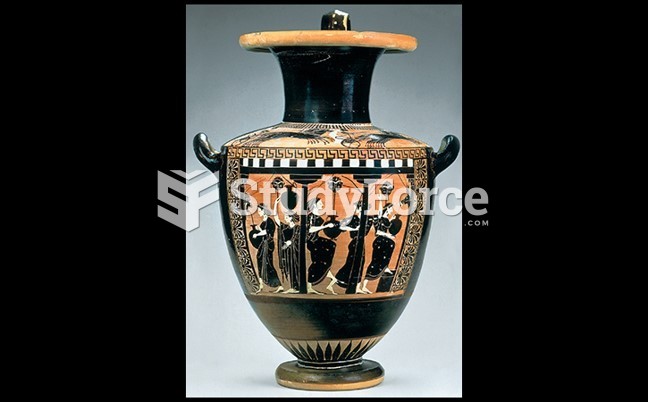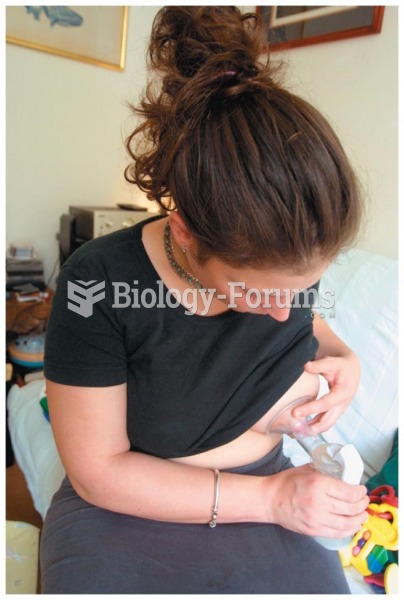Answer to Question 1
- Feminist critics have noticed that of the three brides, only Hippolyta has any lines in Act V. Hermia and Helena are silent. (Their husbands, meanwhile, are wittily engaged in one-upmanship with Theseus.) Either the young women are politely enjoying themselves in the midst of an otherwise very animated scene (no specifically assigned lines being necessary), or once married, they are barred from discourse. Hippolytas role in Act V can be read in counterpoint to their silence.
Professor Mease of Grinnell College, an experienced director and actor, has selected passages in the play as performance assignments for the classroom. She recommends the following monologues and scenes for analysis, memorization, and performance.
Women:
Helena: I.i.226251 (How happy some oer other some can be)
Titania: II.i.81117 (These are the forgeries of jealousy.)
Helena: III.ii.192219 (Lo, she is one of this confederacy)
Men:Robin: II.i.4357; III.ii.634 (My mistress with a monster is in love)
Oberon: II.i.146185 (cut Robins brief lines); II.i.24967 (I know a bank where the wild thyme blows); IV.i.4068
Bottom: IV.i.191204 (When my cue comes, call me . . .)
Scene-work:I.i.128179, Lysander and Hermia (How now, my love?)
I.i.180251, Hermia, Helena, Lysander (Godspeed, fair Helena.)
- ii.182, the mechanicals first meeting
- i.60145, Oberon and Titania (Ill met by moonlight, Proud Titania.)
- i.188244, Demetrius and Helena (I love thee not, therefore, pursue me not.)III.i.189, Mechanicals, through Bottoms translation up to his song
- ii.4387, Demetrius and Hermia (O why rebuke you him that loves you so?)
III.ii.345399, Oberon and Robin (This is thy negligence. . . .)
Shakespeares SourcesThere is no major source for
A Midsummer Nights Dream. The plot appears to be Shakespeares own creation, though he borrows details from many sources. Of the many generally accepted sources for this most original play, Ovids
Metamorphoses,
The Golden Ass of Apuleius, and Chaucers The Knights Tale and The Merchants Tale may be familiar to students. Pyramus and Thisbe appear in Ovid or Goldings translation (1567) and in Chaucers The Legend of Good Women. The lovers derive generally from romances such as Sidneys
Arcadia and Cinthios tales in the
Hecatommithi. In the most lamentable comedy, Shakespeare may have parodied his own most excellent and lamentable Tragedie of Romeo and Juliet, written around the same period. Senecas
Medea and
Hippolytus were favorites with Shakespeare; Senecas seascape with the armed Cupid (
Hipp.) is the source for the vision Oberon relates to Puck (II.i.149157). Erasmuss Praise of Folly links asses and folly in ways pertinent to Bottoms situation as the wise fool vouchsafed a most rare vision.
VideoElijah Moshinsky directed
A Midsummer Nights Dream in 1980 for BBC Televisions Shakespeare Series, distributed by Time/Life in the United States. The BBC Shakespeare Series, produced by Jonathan Miller, is a reliable starting-point for students unfamiliar with the plays. The acting is low-key and realistic, with solid line-work. Directors and designers do their research and take few risks. An uncontroversial production, Moshinskys
Dream is beautifully designed and shot, the aristocrats dressed in seventeenth-century Cavalier costume, the Tudor manor house interiors and woodland inspired by Dutch masters. The mechanicals first scene is set in a tavern a la Frans Hals. The woods are in the Romantic Arcadian style of Claude Lorrain, with an obviously painted though luminous moon reflected in the realistic watery pools where the lovers finally sprawl, wet and muddy from their brawling. Oberon (Peter McEnery), bare-chested, long-haired, on a black horse, is handsome and sensuous. Titania (Helen Mirren) enters with the changeling Indian boy as a vulnerable toddler-in-arms; she is surrounded by a small army of fairies of various ages, male and female, vaguely Celtic and wild. Bottom (Brian Glover) in his hairy asss head is not fearsome but endearing; and he takes in stride his elevation to the fairy queens bed. Hermias Egypt or dark gypsy look is transferred to an angry, ethnic Hippolyta; Theseus (Nigel Davenport) wears armor in his first scene with her, but he quickly becomes the mature statesman, man of reason, and affable host.
ProductionsEllen Mease, Professor of Theatre at Grinnell College, has also provided this appreciation of Peter Brooks celebrated production of
A Midsummer Nights Dream.
Shakespeares romantic comedy
A Midsummer Nights Dream has become, since Peter Brooks Royal Shakespeare production (19701973), the bar exam for ambitious directors. Fitting the protean energies and complexities of the play into the Procrustean bed of a fashionable directorial concept has not killed the patient, but liberated the plays latent dream materials and manifold meanings, as varied as the audiences that respond to them. As Gary Jay Williams observes in
Our Moonlight Revels: A Midsummer Nights Dream
in the Theater, The play comes to the stage as an anthology of gender and class wars, as a critique of state oppression, as a celebration of Third World cultures, and as an exploration of the Victorian or Edwardian past in postmodern angst (204). Darker visions in this recent theatre history may have cramped the plays playfulness and threatened its joyousness, but the dyes seem not to take for long. The play is selfrenewing in every performance, given the vigor and range of the plays nature images, the ultimate beneficence of its aims, the dignity of its principals (the mortal and the fairy royals), the wonder seizing its lovers bent on happiness, and the earnest naivet of the workmen, even Bottom as an ass in the arms of the fairy queen.
The artistic and commercial success of the Academy Award-winning film
Shakespeare in Love, with a loving, exuberant, and smart script by Tom Stoppard and Mark Norman, has perhaps done more to make Shakespeare fans out of a mass audience than any single live production of the Bard in the four hundred years since he wrote. The wide availability of good productions of many of the plays on videotape has also made serious converts. However, those of usand there were many of usfortunate enough to have seen Brooks
Midsummer Nights Dream (hereafter
MND) knew that we were not only
seeing but actively
making the single most innovative production of the play in the twentieth century. Experiencing a great production can transform a dutiful apprentice into a serious student of drama. Not a local phenomenon but an international one, Brooks
MND was probably seen by more theatre audiences than any single theatrical production of a Shakespearean play before or since.
Brooks actors made me listen to a living language, speaking the plays enormously varied verse with an emotional and imaginative immediacy that overrode four hundred years of flattening out and dumbing down of the Queens English. Fleeting as they are in performance, every word, every intention, every verbal image and idea contributed to the something of great constancy Hippolyta identifies in the lovers dream accounts (V.i.26). The crystal-clear intelligence of every characters line delivery, the crisp articulation and pointing of the lines, the brightness and energy of the playingthese were stunning gifts for all of us, not just the conservative spectator setting the bar high for Royal Shakespeare performers.
However, Shakespeare is not just in the language. The play is in its dramatic situation, the story told in pictures and concrete stage action. For anyone who knew the history of
MNDs staging, Brooks visual spectacle was a wonder. The production swept away the elaborate pictorial illusions of nineteenth-century productions set in the antiquarys Athens or Arcadian Salvator Rosa woodlands with real bunnies, and providing an even more blank blank slate than the modernist Shakespearean open stage (innovated by Granville-Barker and popularized by Guthrie at Stratford Ontario and in Minneapolis during the regional repertory movement of the 1950s). Brooks staging gave us a startling white trapezoidal handball court, the atmosphere of circus (trapezes and swings for the fairies and lovers hi-jinks, Pucks Chinese circus yellow jumpsuit in loose silk) and magic (Cupids flower a silver plate spinning on a Lucite rod, soaring from Puck to Oberon as they swung in space), the breathtaking, lush eroticism of Sarah Kestelmans Titania on her swinging bower of immense red feathers, the exposed stage machine (metal catwalk above the set walls, for the stage manager, flying technicians, and musicians), and the woods created out of coils of wire like gigantic Slinkies, which the fairies manipulated with fishing poles from the catwalk. There was no moonlit obscurity in any moment of the performance, only the brilliant white light on the clean white walls. (This anti-illusionist theatricality was influenced by the example of Bertolt Brechts Berliner Ensemble international tour in the mid 1950s.)
The visual magic was embodied in the performers, especially in their colorful costumes (white and pale tie-dye tunics for the lovers, the bright colors of the royals billowing robes) and kinetic movement. Long months of preparation in acrobatics, gymnastics, aikido, magic routines, and aerial artistry made the performers athletes of the plays passions (recalling Meyerholds biomechanical training for Russian actors in the 1920s). At the ribald climax (just before intermission), Bottom was buoyed up, a beefy plebeian Dionysus, on the shoulders of the fairies, their phallic good humor in the best tradition of the old-fashioned bachelor party, as they danced him to his aerial bower. Later the lovers ricocheted like handballs off the walls and hurled themselves like projectiles through the swinging doors upstage. Tiny Hermia leaped into the air to plaster herself spider-like horizontally across a door exit, suspended five feet off the floor, barring Lysanders way. The whooping exuberance of the lovers huge quarrel modulated to another key as the play tried to wind down to the after-dinner entertainment, the burlesque of
Pyramus and Thisbe performed by blue-collar working stiffs. A magnanimous host, Theseus (who doubled as Oberon) insured that the giddy courtiers remarks did not upset the dignity of his earnest amateurs. His democratic sensitivities left the audience free to laugh with the mechanicals, rather than worry about class snobbery and self-regarding wit.
Accounts and photographs of Brooks production are numerous. The authorized acting version of the production (based on the RSC promptbook) is available. It includes abundant photos, design sketches, and interviews or contributions from Brook, Alan Howard (Theseus/Oberon), composer Richard Peaslee, designer Sally Jacobs, technicians and the stage manager. See Glenn Loney, ed.,
Peter Brooks Production of William Shakespeares A Midsummer Nights Dream for the Royal Shakespeare Company (1974). Succinct accounts appear in Williams (222233), Griffiths (66-70), Foakes (2124) and Holland (72 and
passim).
Answer to Question 2
- It begins at line 242 of the final scene, when Othello realizes Iagos villainy after what Emilia says about the handkerchief. Many would hold that it is what happens thereafter that gives the play its truly tragic dimensiona dimension that some would find lacking in, say, Arthur Millers Death of a Salesman, in which Willy Loman goes to his death without ever confronting the harm he has caused by his zealous pursuit of his shallow values.







